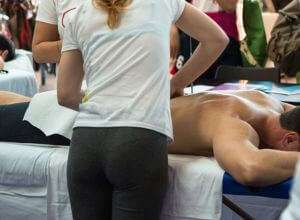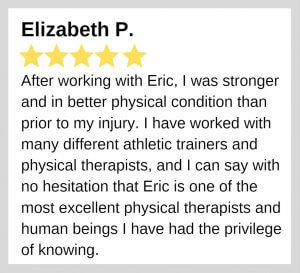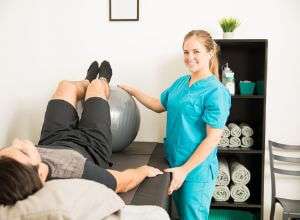If you’re an active individual, you might have seen or need to see a sports physical therapist at some point. Many factors determine how likely that might be, but even minor aches and pains can sneak up on the best of us, especially if we’re into sports. Thankfully, pain often comes and goes, but a sports physical therapist is there to help if it doesn’t.
What Is Sports Physical Therapy?
Also known as sports therapy, it is a special focus on athletes by physical therapists. General physical therapists would be able to help rehabilitate an injury. Nevertheless, a sports physical therapist is trained to deal with sports and exercise injuries and physiological aspects.
They have a deeper understanding of biomechanics and exercise science, two subjects that are important in preventing and fully rehabilitating sports-related injuries.
Because sports physical therapists have a special focus on athletes, they can develop a unique treatment and prevention plan that considers the athlete’s specific sport. Just like each person’s body is unique and responds to a treatment plan uniquely, so does each athlete depending on the sport.

A sports physical therapist would create a plan that considers sport and movement, physiology, strengths and weaknesses, and injury risk based upon a full evaluation. They will then tailor a plan with position-specific and sports-specific exercises to improve the athlete’s movement.
Evaluation And Assessment
Before a physical therapist could create a plan of action for the athlete, the therapist would first do an evaluation. This evaluation includes pain assessment if there’s current pain. During an injury and pain assessment, the sports physical therapist would find the underlying cause of where the pain stems from and provide a diagnosis to treat it properly.
Then, after the pain subsides, they might include functional and mobility testing to know weaknesses and where there can be improvements. This testing would most likely include video and playback to assess the parts of the body most prone to stress during certain movements of the sport.
For example, if the sport needs a lot of jumping and stress to the knee, the sports physical therapist would look closely at that area for signs of weakness. These weaknesses could result in injury, which is why assessing the biomechanics of each athlete is important for prevention.
Sports Injury Prevention
However, most athletes come to see a sports physical therapist when they are already in pain or have been injured. However, sports injury prevention is one of the main benefits to physical therapists in sports medicine. Sports physical therapists have a deeper grasp of exercise science, physiology, and biomechanics.
Therefore, they’re highly qualified to spot muscle instability and weaknesses that can result in an injury.
Furthermore, they could devise a prevention program with proper warm-ups, cool-downs, and special exercises. They not only inform athletes on proper posture and movement through tests like gait analysis for runners, functional tests, or injury risk assessments.
If the sports physical therapists are part of a sports crew, they usually take the time to educate the coach and staff. They’re also open to answering any of the queries from athletes or interested parents.

Getting a sports physical therapist as part of the sports team could also benefit the athlete in catching an injury early. They could easily spot if an athlete has changed posture or seems to favor part of the body.
Both of these signs could suggest an oncoming injury. Spotting this early can mean missing out on a practice, game, or the entire season. With a trained sports physical therapist, an athlete could have the opportunity to maintain muscle strength. They’ll also be able to improve or correct functional or biomechanical weaknesses.
Athletic Trainers And Physical Therapists
Many times, sports physical therapists would work closely with athletic trainers to prevent and treat athletes. Athletic trainers also specialize in preventing, recognizing, and rehabilitating sports-related injuries. They’re often closely involved in the treatment plan for patients and could even work with sports organizations.
When sports physical therapists and athletic trainers work together, they conclude the sports circle of life: injury prevention, training, performance, injury rehabilitation, and return to prevention. Both sports physical therapists and athletic trainers work together from start to end in prevention, training, and rehabilitation as one without the others could lead to re-injury and improper recovery.
What are the Benefits of Having a Sports Physical Therapist?
Overcoming Injuries
Sports physical therapy procedures are some of the best ways to overcome an injury and get relief from your pain. Each treatment is created specifically to the needs of each person and the condition of their injury, consisting of strength-building activities and exercises that are unique to their recovery.
Refocusing Strengths
A sports physical therapist could help you focus on improving your strength in areas that you might not have considered. Many areas of the body influence each other, and strengthening one could help with the function of another. Instead of jumping directly into a new form of activity, it makes sense to train the body to react to the new kind of stimulation by improving your range of motion and muscular strength.
Developing Healthy Habits
While a sports physical therapist could help you reach physical goals, they could also help you work on general wellness goals. For example, a healthy diet, regular exercise, and a strong focus on hydration are important in improving your physical fitness level. A sports physical therapist is an excellent resource for increasing strength and muscular functionality, as they could help you improve all aspects of health and wellness.
What Areas Can A Sports Physical Therapist Help Athletes In?
1. Improved Range Of Motion
In live athletics, the joints are taken to the edge of the tissue’s strength. That’s where injured tissues can give out and be injured or torn. When an athlete must go back to a sport, a sports physical therapist must take their patients to the edge of tissue overload to prepare their tissue for live athletics. Physical therapists should push an athlete’s joints to their very end and ensure no pain, laxity, resistance, or apprehension, which assists in improving an athlete’s range of motion.
2. Neuromuscular Control
Coordinating the different body parts to work together is the job of a sports physical therapist. In neuromuscular coordination, the focus is on the movements of the joints by the tendons, muscles, and nerves. By focusing on these body parts, the injured athlete prepares to return to sports by boosting movement speed during exercises and progressively increasing weight.

3. Technique
Many non-sports physical therapists underestimate the importance of ensuring athletes know how to position or move their bodies to finish an exercise or task. But small details about positioning and technique could help an athlete align their body correctly to load proper tissue (tendons, bone, muscles), unload the wrong tissue, conserve energy and enhance movement performance and efficiency.
Sports physical therapists begin technique training for specific exercises starting on day one and stay focused on technique throughout all stages and levels of the ARC Progression.
4. Muscle Balancing
Athletes usually move in all directions to perfect their sport and play at a high level. That could lead to repetitive training. When this happens, emphasized muscles could be overworked compared to their counterpart, becoming the dominant muscle group.
Aside from sport-specific training, athletes must train muscle groups to balance the load on tendons and joints and create synergy in the body to avoid injury and return to live athletics.
5. Power, Strength, And Speed
Depending on an athlete’s sport, much different strength, power, and speed combinations can be required. To maximize muscular size and strength (hypertrophy), athletes must load their muscles with heavier weights, increase their sets and decrease the repetitions per set. Many patients perform three sets of 10 with weights that aren’t challenging enough to generate true muscular strength.
The maximum power is the ability to move weight over a certain distance in the quickest possible time. Athletes must be challenged to work as quickly as possible against resistance to build their power. Speed is your ability to move the body (or some parts) as quickly as possible. Most sports need the ability to move quickly, and each patient needs individual exercises to coordinate body parts with a stable platform that generates speed.
6. Joint Torque
Rotational load at high velocity is significant for return to almost any sport. Generating and controlling this rotational force over body parts and joints is one of the main focuses of sports physical therapy that would benefit athletes. This includes functional exercise progression and manual therapy, beginning with single-plane movements and progressing to multi-plan and multi-joint motions.
7. Prepare Athlete For Coaching
The athlete should return to practice and coaching when sports physical therapy is almost complete. This crossover of live athletics and sports therapy enables the athlete to ensure they can return to their sport without any new symptoms. Working out the last areas of tightness or pain will ensure a safe return to coaches who expect to get an athlete ready to perform at their best.
When To Seek Treatment And Advice From A Sports Physical Therapist
Professional and emerging athletes should seek treatment and advice from a sports physical therapist when they have:
A Limited Ability To Participate In Sports
Numerous times athletes wait too long to get the advice of a sports physical therapist. The athlete is injured while playing until they realize the pain is not going away on its own. Then they take roughly 2-3 weeks off from their sport only to try and return at the same pre-injury level. However, the pain never goes away if they do nothing during rest. Getting the advice of a sports physical therapist can help them return to the sport with a remarkable ability to participate.

Early Sports Injury Treatment
The best advice is to consult with a sports physical therapist when you start having symptoms that last for a longer period than a few days or when the symptoms influence your ability to participate or train at your desired level. Acute and mild symptoms of pain or tightness are much easier to fix than chronic conditions.
Sports Injury Prevention
Prevention is preventing new injuries and a return of an old injury. Knowing the proper mechanics or movements and loading the correct tissue or unloading the opposite tissue is huge in keeping athletes participating in their sport. Sports physical therapy is paramount, so athletes train properly to maximize performance and minimize injury.
Do you need the help of a sports physical therapist? Reach us today if you’re ready to get back to the sport you love.
FAQ:
What do sports physical therapists do?
Sports physical therapists will often treat athletes. In many instances, sports teams would hire sports physical therapists to create rehabilitation and care plans for improving workout routines, steering clear of sports-related injuries, and properly addressing and treating these injuries should they happen.
What’s a sports physical therapist?
Sports physical therapists treat a wide range of people. Some will be involved in professional sports teams while others in injury clinics, and they treat people with not only musculoskeletal conditions but also sporting injuries.

